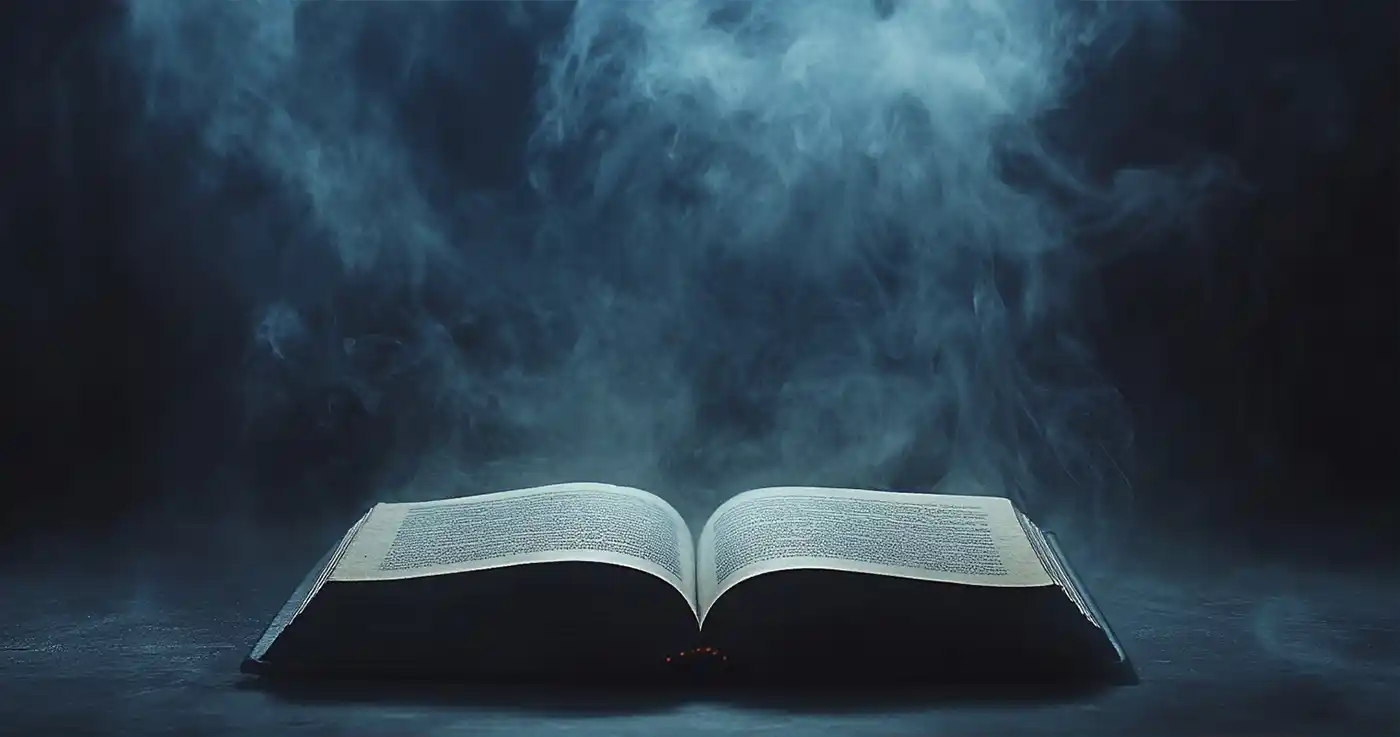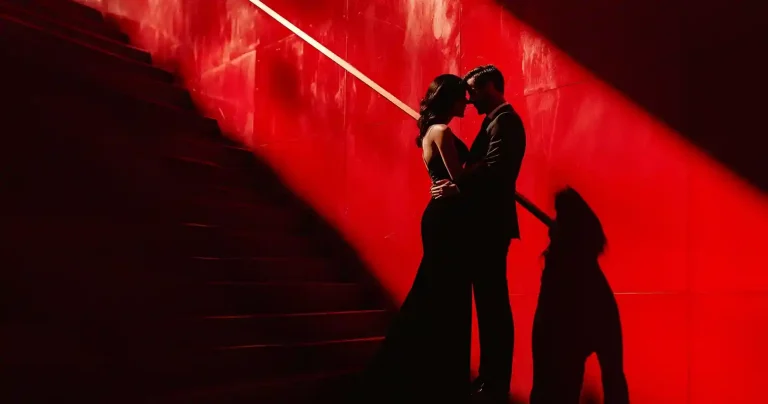Why Thrillers Keep Us Up at Night
Thrillers have an almost magical way of pulling us in and refusing to let go. We’ve all been there: staying up way past bedtime, telling ourselves “just one more chapter,” only to realize it’s dawn and we’ve devoured the entire book. Why are thrillers so irresistibly captivating? The answer lies in their mastery of suspense and tension, two elements that tap into our primal instincts and keep us yearning for more.
This post is your ultimate guide on how to write a thriller that keeps readers hooked from page one to “The End.” We’ll explore how to craft edge-of-your-seat suspense, build unpredictable characters, and create plots filled with twists and turns. Whether you’re a seasoned writer or new to the genre, these tips will help you take your thriller-writing game to the next level.
To level up this post, we’ve included high-impact quotes and insights from bestselling author Rachel Aaron—known for her work on character-driven pacing and plot twists—and writers who’ve workshopped their thrillers live at The WriteTreat. These are real tactics from authors actively crafting books readers can’t put down.
But first, let’s dig into the heart of every great thriller: suspense.
1. Understanding Suspense: The Heartbeat of Thrillers
Suspense is the lifeblood of any thriller. It’s the delicious tension that keeps readers glued to the page, desperate to know what happens next. At its core, suspense is all about creating anticipation. You, as the writer, know what’s coming, but your reader doesn’t—and that gap between knowledge and uncertainty is where the magic happens.
What Is Suspense, Really?
Suspense is the art of making readers care about what might happen. It’s not just about danger or action—it’s about stakes. The protagonist doesn’t have to be dangling off a cliff (although that’s thrilling too); they could be in an intense argument, trying to decipher a mysterious letter, or racing against the clock to stop a ticking bomb. The common thread? There’s always something important at risk, and the resolution feels just out of reach.
The Psychology Behind Suspense
Suspense works because it taps into the human brain’s natural desire for resolution. When we’re presented with an unanswered question or an unresolved situation, our brains can’t help but seek closure. Great thrillers play with this instinct, keeping readers in a state of heightened curiosity and emotional engagement.
Rachel Aaron put it this way during a WriteTreat session: “Readers don’t remember every twist. They remember how they felt while reading. Suspense is about feeling—dread, anticipation, tension—and pacing your reveals to feed that emotion.” –Rachel Aaron, The WriteTreat Zoom sessions
Think of Alfred Hitchcock, the “Master of Suspense.” He described the concept perfectly with his famous “bomb under the table” analogy. Imagine two characters sitting at a café, chatting about everyday topics. Now, let the reader in on a secret: there’s a bomb ticking under the table. Suddenly, the mundane conversation becomes unbearably tense. The stakes have skyrocketed, and the reader is glued to the page, waiting to see what happens.
The Key Ingredients of Suspense
To master suspense, you need to mix the right ingredients:
- Uncertainty: Make readers unsure of what’s going to happen.
- High Stakes: Give characters something to lose—something readers care about too.
- Time Pressure: Add a ticking clock or an imminent deadline.
- Foreshadowing: Drop subtle hints about what might happen, without giving away too much.
Suspense is what transforms a good thriller into a great one. It’s the force that keeps readers turning pages late into the night, unable to stop. In the next section, we’ll dive into how to build compelling characters that make the stakes feel personal and the suspense even more intense.
2. Crafting Characters That Raise the Stakes
Thrillers thrive on high-stakes situations, and nothing raises the stakes more than characters readers care about—or love to hate. In the world of suspense, your characters aren’t just players in the story; they’re the emotional anchors that pull readers into the tension and keep them invested. If your characters fall flat, so will your suspense.
Let’s explore how to craft protagonists, antagonists, and supporting characters that make your thriller unforgettable.
Relatable Protagonists: Heroes With Depth
A thrilling story hinges on its protagonist, the character readers root for. But your hero doesn’t need to be perfect—in fact, they shouldn’t be. Relatable protagonists are flawed, human, and just as vulnerable as the rest of us. These imperfections make their struggles feel real and their victories all the more satisfying.
Take Rachel Watson from The Girl on the Train by Paula Hawkins. She’s an unreliable narrator battling alcoholism and personal trauma. Yet, her vulnerability draws readers in and makes them root for her as she unravels a complex mystery.
To create a compelling protagonist:
- Give Them Motivation: What drives them? Whether it’s revenge, redemption, or protecting a loved one, their goal should resonate emotionally with readers.
Rachel Aaron’s character design tip? “If a character has no agency, they don’t matter. And if they don’t matter, nothing’s at stake. Thrillers die when your lead feels like a pawn.”
–Rachel Aaron, The WriteTreat Zoom sessions
- Add Flaws: Perfect characters are boring. Flaws—like fear, guilt, or arrogance—make them feel human.
- Raise Personal Stakes: The danger should feel deeply personal. It’s not just about saving the world; it’s about what they stand to lose.
Unpredictable Antagonists: The Wild Card
What’s a thriller without a villain who makes your skin crawl? A great antagonist isn’t just an obstacle; they’re a force to be reckoned with, someone whose actions drive the suspense. The key to a memorable villain is unpredictability. If readers can anticipate their every move, the tension fizzles out.
Consider Professor Moriarty, the nemesis of Sherlock Holmes. Moriarty’s brilliance and moral ambiguity make him a constant enigma. Readers never know what he’ll do next, and that unpredictability heightens the stakes in every encounter.
To craft a strong antagonist:
- Make Them Multifaceted: The best villains believe they’re the hero of their own story. Give them a reason for their actions.
- Give Them Power: Whether it’s intelligence, resources, or sheer ruthlessness, they should feel like a genuine threat.
- Keep Them a Step Ahead: Let the antagonist outsmart the protagonist now and then to maintain suspense.
In a WriteTreat workshop, Rachel warned: “If your villain isn’t competent, your hero can’t be compelling. A weak antagonist kills your tension before it begins.”
–Rachel Aaron, The WriteTreat Zoom sessions
Supporting Cast: Amplifying the Tension
Supporting characters might not take center stage, but they play a critical role in building suspense. They can:
- Serve as Red Herrings: A seemingly innocent friend who might be hiding something.
- Add Emotional Stakes: A loved one in danger makes the protagonist’s mission more urgent.
- Highlight the Hero’s Vulnerabilities: A loyal ally’s betrayal can send shockwaves through the story.
Think about the characters in Gone Girl by Gillian Flynn. Each supporting character, from Amy’s parents to Nick’s sister, adds layers of intrigue and contributes to the tension.
Dynamic Relationships: The Ties That Bind
The relationships between your characters—whether they’re alliances, rivalries, or something in between—can be a goldmine for suspense. A fragile truce between the protagonist and antagonist, for example, creates tension in every interaction. Similarly, a romantic subplot with trust issues can keep readers on edge, wondering who will betray whom.
Characters are the heart of any thriller. They’re the ones who make readers laugh, cry, and, most importantly, bite their nails in anticipation. In the next section, we’ll focus on plotting techniques to twist and turn your readers into knots of suspense.
3. Building a Plot That Twists and Turns
A great thriller plot is like a rollercoaster—filled with unexpected drops, sharp twists, and moments that leave readers gasping for air. To master the art of suspense, your story needs to keep readers guessing while delivering satisfying payoffs. Let’s explore how to write a thriller plot that’s as unpredictable as it is gripping.
Start With a Bang
The opening of your thriller is your chance to grab readers by the collar and pull them into the story. A compelling opening scene sets the tone, raises immediate questions, and introduces the stakes. Think of it as the moment where you toss readers into the deep end and leave them desperate to learn how your characters will swim to safety.
For example, in Dan Brown’s The Da Vinci Code, the story kicks off with a shocking murder in the Louvre. This high-stakes opening not only hooks readers but also sets the stage for the mystery and intrigue to come.
To craft a strong opening:
- Start With Action: Introduce a critical event or shocking discovery.
- Raise Questions: Leave readers wondering who, why, or how.
- Hint at the Stakes: Make it clear that something important is at risk.
Rachel shared how she plots for maximum tension: “The strongest first scenes aren’t explosions. They’re questions. The goal is: make your reader say, ‘Oh no. What now?’”
–Rachel Aaron, The WriteTreat Zoom sessions
Strategic Red Herrings
Red herrings are a thriller writer’s secret weapon. They mislead readers and keep them guessing, creating an atmosphere of uncertainty. A good red herring isn’t a random distraction—it’s a carefully placed clue that seems important but ultimately points in the wrong direction.
Take The Silence of the Lambs by Thomas Harris. The investigation into Buffalo Bill includes multiple leads, each one feeling plausible but ultimately leading to dead ends. This keeps readers in a constant state of suspense while building toward the true revelation.
To create effective red herrings:
- Make Them Believable: Red herrings should feel like natural parts of the story.
- Plant Them Early: Introduce them subtly, so they don’t feel like last-minute additions.
- Use Them Sparingly: Too many red herrings can frustrate readers.
Plot Twists That Land
The hallmark of a great thriller is a twist that makes readers gasp. Plot twists work best when they’re surprising yet inevitable. The clues should be there all along, but subtle enough that readers don’t connect the dots until the reveal.
In Gone Girl by Gillian Flynn, the mid-point twist flips the narrative on its head. The shocking revelation about Amy’s diary changes everything readers thought they knew, making the story even more compelling.
To write an effective plot twist:
- Foreshadow Subtly: Plant small clues that readers can look back on after the reveal.
- Subvert Expectations: Turn common tropes or assumptions on their heads.
- Stay Logical: The twist should make sense within the story’s framework.
Rachel emphasized this: “If a twist doesn’t change how you see everything that came before it, it’s not a twist—it’s a distraction.”
–Rachel Aaron, The WriteTreat Zoom sessions
Cliffhangers That Demand Attention
Cliffhangers are the bread and butter of thriller writing. They leave readers hanging at the end of a chapter, compelling them to turn the page. Whether it’s a shocking revelation, a sudden danger, or an unanswered question, a good cliffhanger ensures your story is impossible to put down.
For example, in The Girl with the Dragon Tattoo by Stieg Larsson, many chapters end with revelations that raise new questions, keeping readers hooked.
To craft gripping cliffhangers:
- Interrupt the Action: Stop the scene at a critical moment.
- Introduce a Mystery: Leave a question unanswered or introduce a new one.
- End With a Shocker: Drop a bombshell that changes the trajectory of the story.
Layering Your Twists
To keep readers engaged throughout your thriller, layer twists and turns into your plot. Instead of one big twist, include smaller surprises that build tension and deepen the mystery. These layers add complexity and keep the story unpredictable.
Plotting a thriller is like weaving a web: every thread must connect, creating a structure that traps readers until the very end. In the next section, we’ll explore how to balance pacing to keep your story thrilling without overwhelming readers.
4. Pacing: The Balancing Act of Thrills and Lulls
Pacing is crucial when learning how to write a thriller that keeps readers hooked. Too slow, and readers lose interest; too fast, and the tension doesn’t have room to breathe. The art of pacing lies in knowing when to speed up and when to slow down, ensuring your story remains a gripping ride from start to finish. In this final section, we’ll explore how to strike that perfect balance.
Fast-Paced Scenes: Keep the Adrenaline Pumping
Thrillers thrive on action, urgency, and high stakes. Fast-paced scenes are where the story accelerates, and readers are left gripping the edge of their seats. These moments are perfect for chase scenes, critical confrontations, or plot twists that shift the narrative into high gear.
In The Bourne Identity by Robert Ludlum, fast-paced scenes like Jason Bourne’s escapes are packed with tension, tight prose, and rapid developments. The reader feels the adrenaline as if they’re right there with him.
To create effective fast-paced scenes:
- Use Short Sentences and Paragraphs: This speeds up the reading experience and mirrors the urgency of the action.
- Cut the Fluff: Stick to what’s immediately relevant—no unnecessary descriptions or inner monologues.
- Increase the Stakes: Add a sense of time pressure, danger, or conflict to keep the momentum going.
Moments to Breathe: Let Readers Catch Up
While thrillers are known for their excitement, constant high energy can overwhelm readers. Slower scenes act as moments to catch their breath, process what’s happened, and build anticipation for what’s to come. These lulls also allow you to develop your characters and deepen the emotional stakes.
For example, in The Shining by Stephen King, quieter moments, such as Jack Torrance’s introspection or Danny’s exploration of the Overlook Hotel, build atmosphere and character depth. These slower sections make the intense moments hit even harder.
To write slower scenes effectively:
- Focus on Character Development: Use these moments to explore your characters’ motivations, relationships, and internal conflicts.
Rachel explained: “In thrillers, pacing isn’t about speed. It’s about control. Slow moments should simmer with unresolved tension. That’s where your emotional stakes live.”
–Rachel Aaron, The WriteTreat Zoom sessions
- Build Atmosphere: Slow scenes are a great opportunity to create an unsettling mood or foreshadow future events.
- Set Up the Next Big Moment: Plant the seeds for upcoming twists or conflicts, subtly increasing tension even in the lull.
The Rhythm of Suspense
Thrillers work best when they follow a rhythm—alternating between fast and slow moments to create a dynamic flow. The contrast between the two makes the highs feel higher and the lows more impactful. Think of it like a symphony: crescendos of action followed by softer interludes that build anticipation.
To structure your pacing:
- Start Strong: Hook readers early with an action-packed or high-stakes opening.
- Alternate Intensity: Follow tense scenes with quieter ones to avoid fatigue.
- End With a Bang: As you approach the climax, shorten the lulls and ramp up the intensity until the story reaches its explosive conclusion.
Time Pressure: A Built-In Accelerator
Adding a ticking clock to your plot is one of the easiest ways to maintain pacing. Whether it’s a literal countdown (like a bomb set to explode) or a figurative one (like a missing person who must be found), time constraints keep the story moving and add urgency to every scene.
Avoiding Pacing Pitfalls
Even the best thrillers can falter if the pacing isn’t just right. Here are common mistakes to avoid:
- Constant Action: Nonstop thrills can desensitize readers and make big moments feel less impactful.
- Overextended Lulls: Slow scenes that drag can kill momentum. Keep them purposeful and concise.
- Abrupt Endings: Don’t rush the resolution. Give readers enough time to savor the payoff.
Pacing is the invisible force that guides readers through your story, ensuring they’re hooked from beginning to end. With the right balance of thrills and lulls, your thriller will leave readers breathless yet deeply satisfied.
And there you have it—the blueprint for writing a thriller that keeps readers hooked. Armed with these tools, it’s time to craft your masterpiece. Will your story be the one readers can’t put down? Only you can make that happen. Now go write your thriller!








